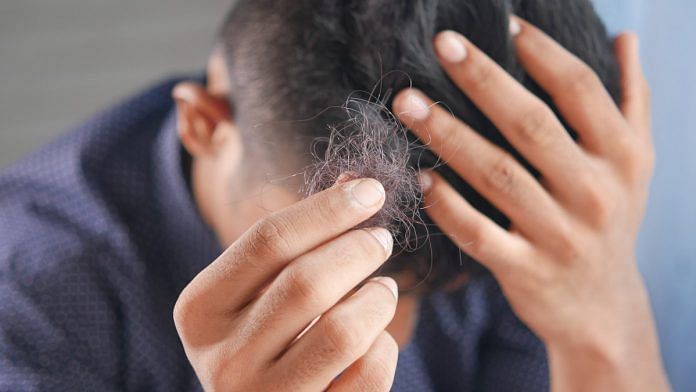The humble-looking hair is not so humble when it comes to beauty, appearance, and, most importantly, safeguarding vital body organs. Beyond its cosmetic value, hair also helps solve criminal cases by preserving the DNA of its owner. Losing one’s hair early in life becomes more than a mere aesthetic setback— it is a loss of identity.
Androgenetic alopecia, a male hormone-induced syndrome, deprives hair follicles of growth-enabling proteins, leading to hair loss. Post-Covid-19, my experience as a dermatologist shows the rising patterns of baldness in both men and women. The need is to explore and understand various causes of premature hair fall in males.
Genetic factors for long and air pollution in recent times have contributed to baldness in males. What afflicts our parents in their 50s or 60s can now occur two or three decades earlier. Over my 13 years of practice, I have witnessed youths in their 20s and 30s experiencing hair loss and baldness. Causes vary between male and female patients, with stress, hard water, nutritional deficiencies, hormonal imbalances, and the excessive use of hair products such as colour, steam, gel, oil, perfume, and shampoo among the culprits. Recently, pollution has emerged as a prominent factor in hair loss, affecting people in cities worldwide.
When pollution settles on male scalps, it leads to issues like dandruff and seborrhoeic dermatitis, especially in urban areas. A layer of pollution deposits on the scalp, weighing down the roots and causing hair to shed.
Male pattern hair loss can start in late teens or early twenties, and by age 50, 30 per cent to 50 per cent of men may experience Male Androgenetic Alopecia (MAA). It is identified by a gradual loss of terminal hair, forming an “M” shape and eventual balding or thinning of the scalp’s top layer. Therefore, regular check-ups and proper vitamins and minerals are crucial in polluted environments.
Our hair follows a growth cycle, which consists of an active, dormant, and shedding phase. When different elements combine, they disturb the natural growth cycle and precipitate shedding. So, it is not solely about genes; we need to take a closer look at our lifestyle choices as well. Deteriorating air quality in cities like Delhi, Mumbai, Jhunjhunu, Bathinda, etc. contributes significantly to hair loss. A recent report links excessive fireworks during Diwali to increased PM2.5 levels—1,945 µg/m, or 33 times higher than the national safe limit of 60 µg/m3 and 132 times higher than the WHO-recommended safe limit of 15 µg/m3. These pollutants are believed to decrease beta-catenin, a specific protein crucial for hair growth, by depositing on the hair shaft.
Therefore, prioritising scalp care has become paramount. Implementing the following practices can help minimise its impact on male pattern baldness:
1) Consistent cleansing of the scalp using mild shampoos, at least three times a week, will remove accumulated pollutants and excess oil. When choosing shampoos, opt for products that incorporate natural ingredients and are free from harsh chemicals. Those with dandruff should use a shampoo with an anti-fungal ingredient to help prevent excessive growth of Malassezia.
2) Wear hats, scarves, or protective headgear in highly polluted environments.
3) A nutrient-rich diet that includes vitamins (such as biotin, vitamin E, and vitamin D) can help combat the oxidative stress caused by pollutants and contribute to stronger, healthier hair.
4) Improve indoor air quality by installing air purifiers. Not only does it reduce the risk of respiratory issues, allergies, and other health complications, but it also has a positive impact on hair health. Use camphor, which releases nascent oxygen, and keep indoor plants like areca palm, snake plant, money plant, peace lily, aloe vera, etc.
5) Whenever feasible, avoid heavily polluted areas and stay updated on air quality indexes and forecasts to plan outdoor activities accordingly.
Consistency in these practices is key to establishing and maintaining a healthy scalp and hair environment, potentially reducing the risks associated with exposure to pollutants, including male pattern baldness and hair loss.
Dr Deepali Bhardwaj is a dermatologist, anti-allergy specialist, laser surgeon and internationally trained aesthetician. She tweets @dermatdoc. Views are personal.
(Edited by Prashant)



